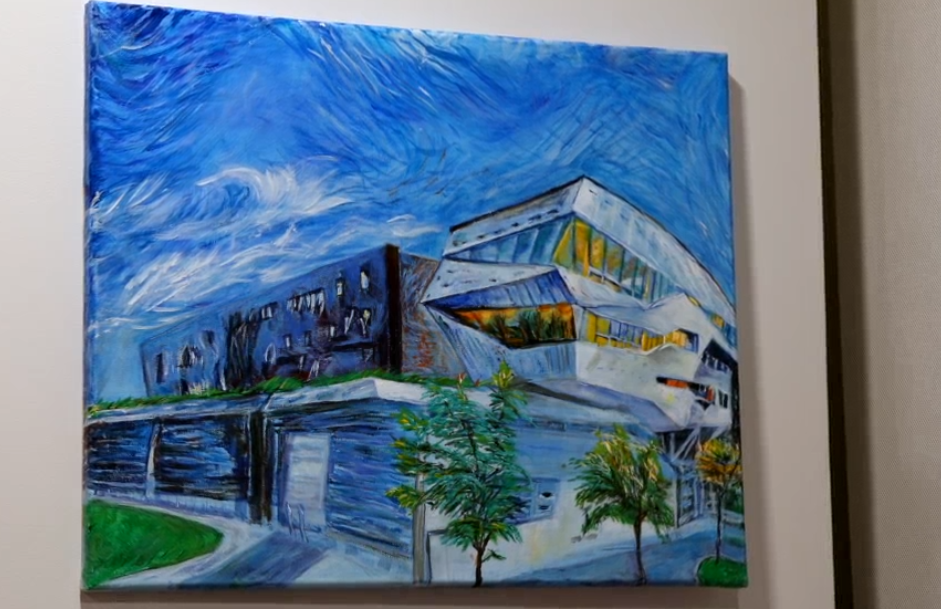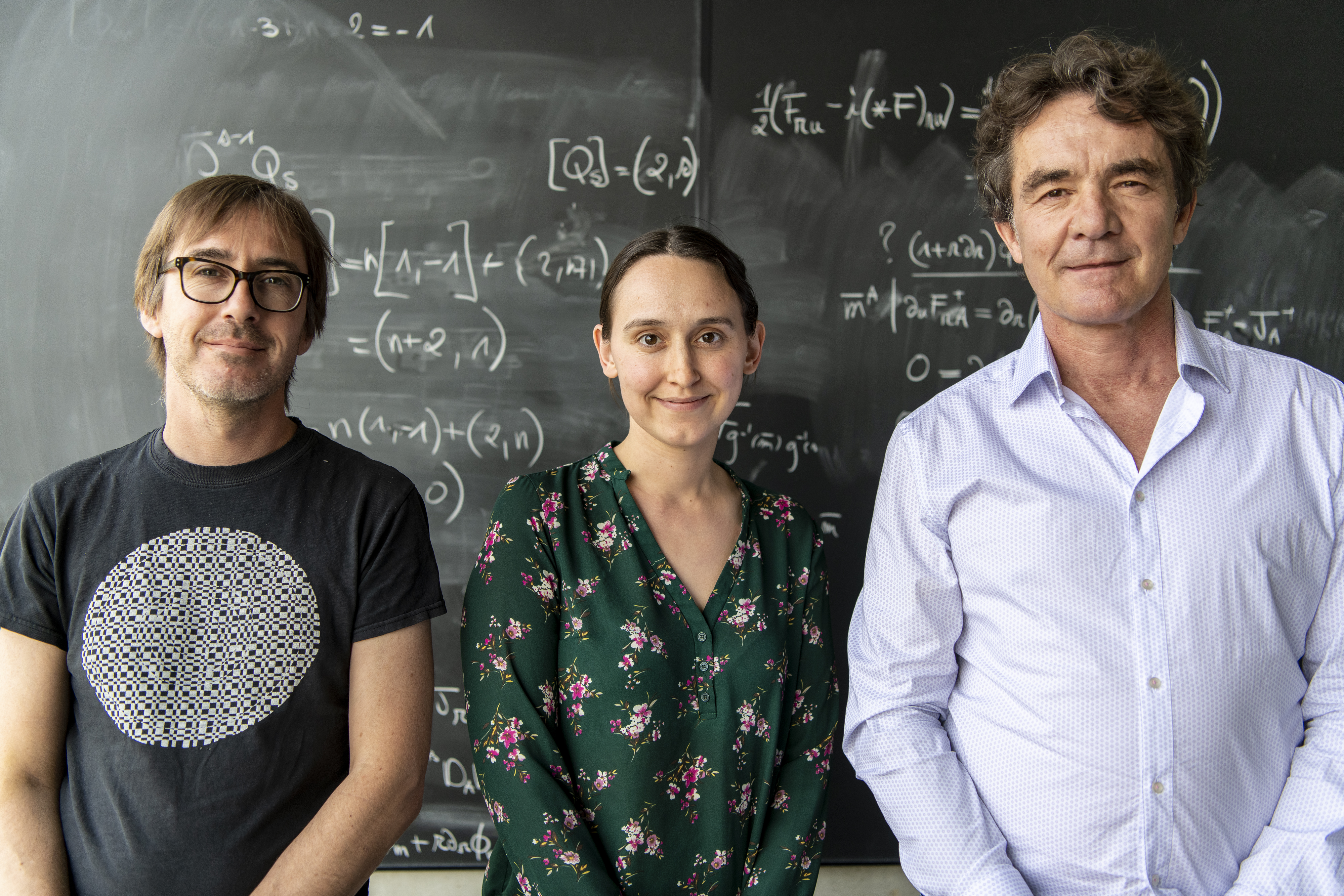Stepping into Sabrina Gonzalez Pasterski’s office at Perimeter Institute feels like getting a peek into her busy mind.
A pinball machine blinks and bloops in one corner. Tucked away below a 3D printer are blueprints for the airplane she built and flew before she was old enough to drive a car. Mixed amid all the physics textbooks on the bookshelf are books about her first fascination, aerospace engineering.
On the wall beside her desk hangs a Van Gogh-style painting of the Perimeter Institute building that her mother recreated from a poster for Perimeter’s 2021 “Day of Discovery.”
Her office isn’t just a workspace — it’s a map of her restless energy, her layered curiosities, and her insatiable desire to discover something previously unknown.
Born in Chicago in 1993, Pasterski developed an early respect for aerospace entrepreneurs and the literal rocket scientists setting humanity on a course for Mars and beyond.
As a pre-teen, she hatched a scheme to get herself noticed by leaders of aerospace technology: she’d prove she was smart enough to work for them by building her own plane.
She started flying lessons at nine and built a plane by 12, logging hundreds of hours building and flying her personal aircraft.
"It’s really like freedom," she says of her early flights.
By the time she arrived at MIT at age 17, she pivoted her strategy. "I thought, I’ve done aerospace — I’m going to be a physicist now."
At MIT, she graduated at the top of the physics program with a perfect 5.00 GPA, then earned her PhD at Harvard under Andrew Strominger, where she co-discovered the spin memory effect and helped complete the Pasterski–Strominger–Zhiboedov triangle (research cited by the late Stephen Hawking).
She joined Perimeter in 2021 and immediately got work launching the Iinstitute’s Celestial Holography Initiative – a team exploring one of the most tantalizing questions in physics: can our three-dimensional universe be described by a two-dimensional theory?
"Celestial holography is two words: celestial and holography," she explains. "By celestial, we literally mean looking up at the night sky — how do you encode the physical universe as a hologram?" This idea, if fully understood, could lead to major advances in the long-standing mystery of quantum gravity.
The Celestial Holography Initiative got a major push from an $8 million Simons Foundation grant. The grant fuels a rare merger of bottom-up approaches, based on symmetries, and top-down methods rooted in string theory, giving her group, and the broader field, fertile soil for new breakthroughs. "There’s a lot we can do with the resources to move the whole field forward,” she says.
Pasterski’s path to physics was unconventional — something that has worked both in her favour and to her detriment. Because she started so young, she drew media attention as “the next Einstein” — a label she insists she did not deserve and that placed incredible pressure on her to meet expectations.
"It wasn’t imposter syndrome — it was knowing you’re actually an imposter because of clickbait," she remembers. She studied doubly hard to earn her physics chops and forestall criticism that she was overhyped.
At Perimeter, she’s found a place where she can be herself — restlessly curious, brimming with difficult questions and bold new ideas, surrounded by peers.
"I definitely found my people here," she says. "Everybody wants to have a big discovery. But how do you approach that? Do you fight the competition, or do you work more collaboratively? Talking more can help improve ideas."
She’s excited for the future — not just for her research, but for how Perimeter can shape the physics enterprise itself.
"Perimeter’s not just supporting individual physicists," she says. "It’s about building the enterprise of theoretical physics: outreach, education, new ways to do research. I’m personally excited about how AI could change the way we do our jobs, and I think
Perimeter is in a prime position to be involved in that."
She thrives in the collaborative setting at Perimeter, joining group discussions and impromptu blackboard conversations. And, when it’s time for solo reflection, she immerses herself in the cozy confines of her office, sleuthing out the workings of the universe in the warm glow of the pinball machine.
À propos de l’IP
L'Institut Périmètre est le plus grand centre de recherche en physique théorique au monde. Fondé en 1999, cet institut indépendant vise à favoriser les percées dans la compréhension fondamentale de notre univers, des plus infimes particules au cosmos tout entier. Les recherches effectuées à l’Institut Périmètre reposent sur l'idée que la science fondamentale fait progresser le savoir humain et catalyse l'innovation, et que la physique théorique d'aujourd'hui est la technologie de demain. Situé dans la région de Waterloo, cet établissement sans but lucratif met de l'avant un partenariat public-privé unique en son genre avec entre autres les gouvernements de l'Ontario et du Canada. Il facilite la recherche de pointe, forme la prochaine génération de pionniers de la science et communique le pouvoir de la physique grâce à des programmes primés d'éducation et de vulgarisation.
Ceci pourrait vous intéresser





